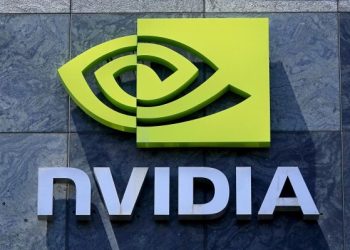China’s AI Chip Ambition
China is ramping up its efforts to challenge Nvidia’s dominance in the AI chip market. Through strategic investments and domestic advancements, China is positioning itself to rival the leading AI hardware supplier in the world. Beijing’s push to erode U.S. technological supremacy has transitioned from long-term goals to tangible momentum, with significant steps in AI, robotics, and high-end semiconductor development.
Shifting the AI Landscape
The race began to heat up in 2024 when DeepSeek, a Chinese AI team, unveiled a large language model that came at a significantly lower training cost compared to Western peers. The launch immediately shook the market, putting a dent in Nvidia’s stock value and signaling a shift in AI capabilities away from Silicon Valley.
Since then, Chinese tech giants like Alibaba and Huawei have rolled out their own AI chips and technology roadmaps. These innovations aim to reduce China’s dependency on Western suppliers while offering improved energy efficiency and AI performance for domestic workloads.
Building a Domestic AI Ecosystem
China’s strategy combines state funding, preferential procurement, and a domestic cluster effect. Research labs, foundries, system integrators, and cloud operators are co-locating to develop AI infrastructure, pushing for commercial scalability. However, challenges like the absence of sophisticated fabs, and restrictions on advanced tools and materials continue to pose hurdles.
Despite these obstacles, startups like Cambricon and MetaX have seen rising investor interest, especially after securing domestic procurement deals. The government’s focus on self-sufficiency and AI leadership is fueling this rapid pace of development.
Nvidia’s Market Hold
Despite China’s rapid progress, Nvidia’s GPUs are still the preferred choice for many Chinese cloud and AI companies. Reuters reporting reveals that even as local alternatives improve, companies remain reluctant to entirely abandon Nvidia’s chips. The dual focus on pragmatic performance and nationalistic procurement makes it evident that China’s quest to develop its own AI chips is not without challenges.
Nvidia’s CEO, Jensen Huang, has acknowledged the potential losses from the Chinese AI market but maintains that Nvidia’s performance and innovation will continue to sustain its position as a leader. However, the growing pressure from Chinese tech companies and their government-backed push presents an undeniable threat to Nvidia’s premium market share.
Geopolitics Meets Technology
The growing geopolitical tension surrounding semiconductor export restrictions is only making the race fiercer. China has already been working to overcome these limitations by developing alternative supply chains, which also include EUV lithography and design tools.
For now, Nvidia still holds a dominant market share, but China’s AI chip momentum cannot be ignored. The potential for AI chip competition in the coming years will create a diverse and bifurcated ecosystem, with separate regulatory regimes shaping distinct AI hardware markets globally. The outcome of this technological race will shape the future of AI and chip manufacturing for decades to come.







